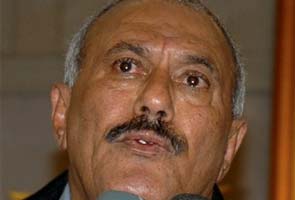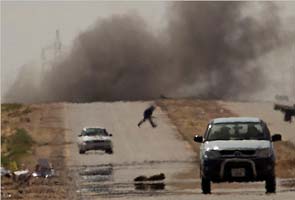Washington: An American F-15E fighter jet crashed in Libya overnight and one crew member has been recovered while the other is "in the process of recovery," according to a spokesman for the American military's Africa Command and a British reporter who saw the wreckage.
The crash was likely caused by mechanical failure and not hostile fire, the spokesman, Vince Crawley, told Reuters. Details of the incident remained sparse. The crash was the first known setback for the international coalition attacking Col. Moammar el-Gaddafi's forces in three days of strikes authorized by the United Nations Security Council.
The military campaign to destroy air defenses and establish a no-fly zone over Libya has nearly accomplished its initial objectives, and the United States is moving swiftly to hand command to allies in Europe, American officials said on Monday, but fighting continued on Tuesday as reports began to emerge of the crash of the American warplane.
"Just found a crashed U.S. warplane in a field. believe a mechanical failure brought it down," a correspondent for Britain's Daily Telegraph newspaper, Rob Crilly, said in a message on Twitter. "Came down late last night. Crew believed safe."
The American military did not say where the plane crashed, but the British newspaper said on its Web site that it had landed in a field near Benghazi, the de facto rebel capital in the east of the country. A photograph showed the charred debris of the warplane surrounded by onlookers.
American, British and French warplanes have been flying missions since Saturday, stalling a ground attack by pro-Gaddafi forces in the east and hitting targets including air defenses, an airfield and part of Colonel Gaddafi's compound in Tripoli.
But the firepower of more than 130 Tomahawk cruise missiles and attacks by allied warplanes have not yet succeeded in accomplishing the more ambitious demands by the United States -- repeated by President Obama in a letter to Congress on Monday -- that Colonel Gaddafi withdraw his forces from embattled cities and cease all attacks against civilians.
Ahmed Khalifa, a rebel spokesman in Benghazi, said on Tuesday that there was still heavy fighting in the western rebel-held cities of Misurata and Zintan. Government forces firing on Misrurata killed 40 people and wounded 189, he said, adding that rebel fighters were "combing" the city for Colonel Gaddafi's troops. Mr. Khalifa said that 4,000 Egyptian migrants were stuck in the city, trying to get home.
Government shelling of Zintan had demolished a mosque, Mr. Khalifa said, adding that Colonel Gaddafi's talk of a cease-fire was "meaningless." He said that the allied airstrikes "did in fact prevent further death and destruction." "The front lines are still very fluid," he said, saying there was no movement in the standoff between rebel fighters and Gaddafi forces in the eastern city Ajdabiya.
The fighting continued in defiance of United Nations resolutions authorizing the allied strikes and demanding an immediate cease-fire by Colonel Gaddafi's forces and an end to attacks on civilians.
But the campaign against Colonel Gaddafi's forces drew fresh condemnation on Tuesday as China called for an immediate cease-fire, India said there should be no foreign presence in Libya and Brazil urged a cease-fire and "the start of dialogue." India and Brazil joined Russia, China and Germany in abstaining from the United Nations vote last week that authorized the intervention.
State television in Libya said on Tuesday there had been more attacks by what it called the "crusader enemy," Reuters reported, but the broadcaster struck a defiant tone. "These attacks are not going to scare the Libyan people," state television said.
Pentagon officials are eager to extract the United States from a third armed conflict in a Muslim country as quickly as possible. But confusion broke out on Monday among the allies in Europe over who exactly would carry the military operation forward once the United States stepped back, and from where.
In Washington, lawmakers from both parties argued that Mr. Obama had exceeded his constitutional authority by authorizing the military's participation without Congressional approval. The president said in a letter to Congress that he had the power to authorize the strikes, which would be limited in duration and scope, and that preventing a humanitarian disaster in Libya was in the national interest.
At the United Nations, the Security Council rejected a request from Libya for a meeting to discuss the situation.
Gaddafi forces were holding out against the allied military campaign to break their grip. Rebel fighters trying to retake the eastern town of Ajdabiya said their advance was halted on Monday by tank and rocket fire from government loyalists still controlling entrances to the city. Dozens of fighters fell back to a checkpoint about 25 miles north of Ajdabiya, in Zueitina.
By the early afternoon, the fighters said at least eight of their confederates had been killed in the day's fighting, including four who were killed when a tank shell struck their pickup truck.
In the western city of Misurata, forces loyal to Colonel Gaddafi were still at large and were using civilians as human shields, Reuters reported, but that could not be immediately confirmed.
At the Pentagon, officials said that the intensive American-led assault unleashed over the weekend was a classic air campaign, chosen by Mr. Obama among a range of military options, which was intended to have coalition aircraft in the skies above Libya within days and without fear of being shot down. "You don't do that piecemeal," a United States military official said. "You do it all at once, and you do it as fast as you can."
The targets included radar installations, fixed and mobile antiaircraft sites, Libyan aircraft and hangars, and other targets intended to make it safe for allied aircraft to impose the no-fly zone. They also included tanks and other ground forces engaged with the rebels around the country, reflecting the broader aim of pushing Colonel Qadaffi's forces to withdraw from disputed cities. Communications centers and at least one Scud missile site were also struck.
Explosions and antiaircraft fire could be heard in and around Tripoli on Monday in a third straight night of attacks there against Colonel Gaddafi's forces.
United States military officials said that there were fewer American and coalition airstrikes in Libya on Sunday night and Monday, and that the number would probably decline further in coming days. But Gen. Carter F. Ham, the head of the United States Africa Command, who is in charge of the coalition effort, said that there would be strikes on Colonel Gaddafi's mobile air defenses and that some 80 sorties -- only half by the United States -- were flown on Monday.
General Ham also said he had "full authority" to attack the regime's forces if they refused to comply with President Obama's demands that they pull back from Ajdabiya, Misurata and Zawiya.
By Monday night, explosions and antiaircraft fire could be heard in and around Tripoli in the third straight day of attacks.
In Santiago, Chile, Mr. Obama restated that the United States would soon turn over full responsibility to the allies to maintain the no-fly zone. He also sought to distinguish the stated goals of the United Nations-authorized military operation -- protecting Libyan civilians, establishing a no-flight zone and forcing Colonel Gaddafi's withdrawal from the cities -- with his own administration's demand, not included in the United Nations resolution, that Colonel Gaddafi had to leave office.
"It is U.S. policy that Gaddafi needs to go," Mr. Obama said at a news conference with the Chilean president, Sebastián Piñera. "And we've got a wide range of tools in addition to our military effort to support that policy." Mr. Obama cited economic sanctions, the freezing of assets and other measures to isolate the regime in Tripoli.
United States military commanders repeated throughout the day that they were not communicating with Libyan rebels, even as a spokesman for the rebel military, Khaled El-Sayeh, asserted that rebel officers had been providing the allies with coordinates for their airstrikes. "We give them the coordinates, and we give them the location that needs to be bombed," Mr. Sayeh told reporters.
On Monday night, a United States military official responded that "we know of no instances where this has occurred."
Earlier in the day, General Ham repeatedly said in answer to questions from reporters that the United States was not working with the rebels. "Our mission is not to support any opposition forces," General Ham said by video feed to the Pentagon from the headquarters of Africa Command in Stuttgart, Germany.
Mr. Sayeh said that there were no Western military trainers advising the rebel fighters, but that he would welcome such help. He added, with evident frustration, that the rebel fighters on the front in Ajdabiya "didn't take orders from anybody."
Like other rebel military officials, Mr. Sayeh said the rebels had been working to better organize their ranks to include members of specialized units from the Libyan Army that would attack Colonel Gaddafi's forces when the time was right. But evidence of such a force has yet to materialize.
The rebels appeared to have fallen into some disarray as they returned from Ajdabiya, with one commander at the checkpoint trying to marshal them with a barely functioning megaphone. He tried organizing the assembled fighters into columns for an attack, but nearly fell off the truck as he ordered the fighters to move.
"I know most of you are civilians," he said. "But we have to charge." Only a few trucks inched forward as other fighters stood and argued among themselves.
At NATO headquarters in Brussels on Monday, members of the military alliance came to no agreement on who would take the lead on a no-fly zone or how to proceed on enforcing a United Nations arms embargo against Libya.
Prime Minister David Cameron of Britain said responsibility for the no-fly zone would be transferred to NATO. But France objected to that, with its foreign minister, Alain Juppé, saying: "The Arab League does not wish the operation to be entirely placed under NATO responsibility. It isn't NATO which has taken the initiative up to now."
Turkey, a NATO member that has opposed the use of force in Libya and was still seething over being omitted from a planning meeting in Paris on Saturday, refused on Sunday to back a NATO military plan for the no-fly zone. But its prime minister, Recep Tayyip Erdogan, denied that his country was against NATO participation in the operation, saying only that he wanted assurances that it would be brief and not end in an occupation.
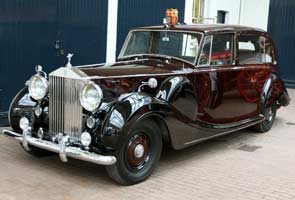
 After the ceremony, she and Prince William will ride in an open-topped 1902 State Landau horse-drawn carriage for the procession back to Buckingham Palace, unless inclement weather leads them to use the famed "Glass Coach," which has a fixed roof to keep rain at bay.
After the ceremony, she and Prince William will ride in an open-topped 1902 State Landau horse-drawn carriage for the procession back to Buckingham Palace, unless inclement weather leads them to use the famed "Glass Coach," which has a fixed roof to keep rain at bay.
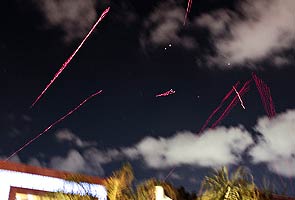
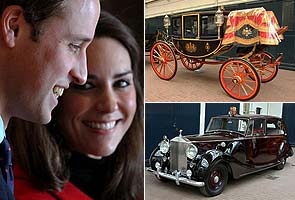
 Click to Expand & Play
Click to Expand & Play